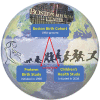Boston Birth Cohort profile: rationale and study design
- PMID: 37745944
- PMCID: PMC9844822
- DOI: 10.1097/PN9.0000000000000011
Boston Birth Cohort profile: rationale and study design
Abstract
In1998, the Boston Birth Cohort (BBC) was initiated at Boston Medical Center (BMC) in response to persistently high rates of preterm birth (PTB, defined as birth before 37 weeks of gestation) in the US population and the longstanding profound PTB disparity among Black, Indigenous, and people of color (BIPOC). The BBC encompasses two linked study protocols: The PTB Study serves as the baseline recruitment in the BBC. It aims to address fundamental questions about the causes and consequences of PTB. The study oversamples preterm babies using a case/control study design, in which cases are defined as mothers who deliver a preterm and/or low birthweight baby (<2500 grams regardless of gestational age). Controls are enrolled at a 2:1 control/case ratio and matched by maternal age (±5 years), self-reported race and ethnicity, and date of delivery (± 7 days for case delivery). From inception, it was designed as a comprehensive gene-environmental study of PTB. As a natural extension, the Children's Health Study, under a separate but linked Institutional Review Board protocol, is a longitudinal follow-up study of the participants who were recruited at birth in the PTB Study and who continue pediatric care at BMC. This linked model allows for investigation of early life origins of pediatric and chronic disease in a prospective cohort design. The BBC is one of the largest and longest National Institutes of Health-funded prospective birth cohort studies in the United States, consisting of 8733 mother-child dyads enrolled in the PTB Study at birth, and of those, 3592 children have been enrolled in the Children's Health Study, with a median follow-up of 14.5 years. The BBC mirrors the urban, underresourced, and underrepresented BIPOC population served by BMC. A high proportion of BBC children were born prematurely and had chronic health conditions (e.g., asthma, obesity, and elevated blood pressure) in childhood. The BBC's long-term goal has been to build a large, comprehensive database (epidemiological, clinical, and multiomics) and biospecimen repository to elucidate early life origins of pediatric and chronic diseases and identify modifiable upstream factors (e.g., psychosocial, environmental, and nutritional) to improve health across the life course for BIPOC mothers and children.
Keywords: Boston Birth Cohort; Early life origins of chronic diseases; Environment; Genetics; Longitudinal study.
Copyright © 2022 The Author(s), Published by Wolters Kluwer Health, Inc.
Conflict of interest statement
None declared.
Figures



References
-
- March of Dimes, PMNCH, Save the Children, WHO. Born Too Soon: The Global Action Report on Preterm Birth. 2012. https://www.marchofdimes.org/materials/born-too-soon-the-global-action-r.... [Accessed April 20, 2022]
-
- Ventura SJ, Martin JA, Curtin SC, Mathews TJ, Park MM. Births: Final data for 1998. Natl Vital Stat Rep 2000;48(3):1–100. https://stacks.cdc.gov/view/cdc/85761. - PubMed
-
- Blencowe H, Cousens S, Oestergaard MZ, et al. . National, regional, and worldwide estimates of preterm birth rates in the year 2010 with time trends since 1990 for selected countries: a systematic analysis and implications. Lancet 2012;379(9832):2162–2172. doi:10.1016/S0140-6736(12)60820-4. - PubMed
-
- Centers for Disease Control and Prevention. Preterm Birth. 2021. https://www.cdc.gov/reproductivehealth/maternalinfanthealth/pretermbirth.... [Accessed April 20, 2022].
Grants and funding
LinkOut - more resources
Full Text Sources
Research Materials
